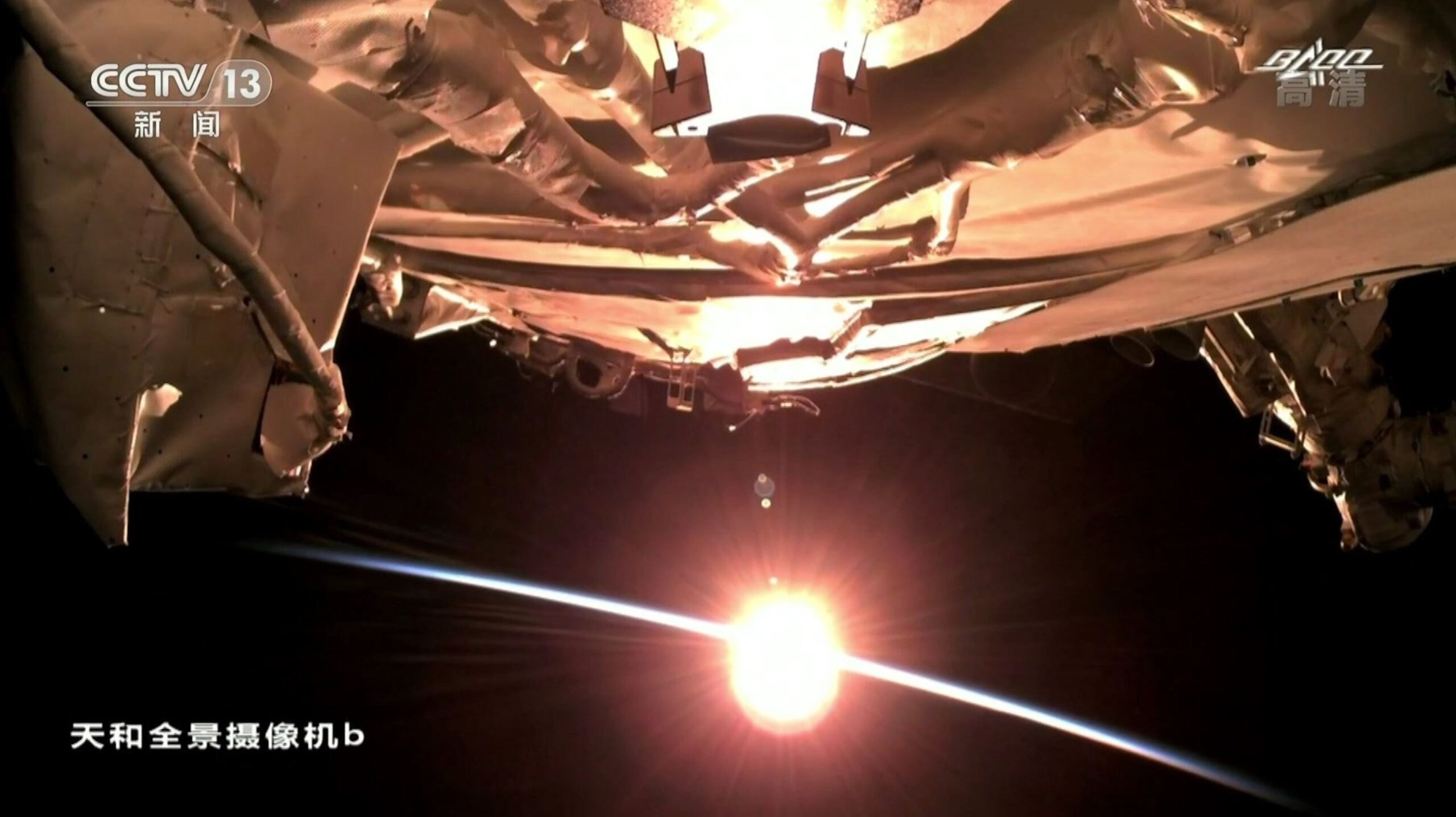
HELSINKI — China’s main space contractor will target more than 40 orbital launches this year, including completion of the Tiangong space station, following 48 successful launches in 2021.
The China Aerospace Science and Technology Corp. (CASC) stated on social media that it is targeting more than 40 launches, including six missions to complete the construction of the country’s space station.
The Tianzhou-4 cargo spacecraft will launch on a Long March 7 from Wenchang to dock with the orbiting Tianhe core module around March or April, following the end of the ongoing, six-month Shenzhou-13 crewed mission.
The station’s third crewed mission, Shenzhou-14, will follow Tianzhou-4. The mission’s three astronauts will be aboard Tianhe for the arrival of the 20-metric-ton-plus Wentian and Mengtian modules, expected to launch around June and August respectively.
The module launches will complete the T-shaped orbital outpost. Tianzhou-5 will launch ahead of Shenzhou-15, both scheduled for late in the year.
The module launches will be followed closely, partly due to the significance of the missions, but also because of the use of the Long March 5B, the two previous launches of which saw the large first stages make high-profile uncontrolled reentries which sparked acrimony.
The Tiangong space station is planned to operate in orbit for at least ten years. It will host a range of international experiments through collaboration with the United Nations Office of Outer Space Affairs, and potentially foreign astronauts and further modules in the coming years.
CASC will also launch the first Long March 6A, featuring a liquid core with solid boosters, from a new complex constructed at the Taiyuan spaceport. The Long March 8 will launch for the second time in February, but it is unknown if the mission will include tests related to plans for the eventual recovery and reuse of its first stage.
The group does not release a detailed manifest, meaning mission timing and payloads are often unknown until after launch. Airspace closure notices remain a main indicator of upcoming missions.
The workhorse Long March 3B will likely launch a number of communications and possibly replacement Beidou satellites in geosynchronous and medium Earth orbits. Weather, remote sensing, technology test and classified Shiyan and Shijian satellites can also be expected to be sent into orbit.
A number of sea launches of the Long March 11 are also expected from a new Eastern spaceport in Shandong province, established to facilitate maritime missions. A new vessel is being prepared to host the launches, which have previously been conducted in the Yellow Sea.
Possible space science launches include the Advanced Space-based Solar Observatory (ASO-S), which follows the October launch of the Chinese H-alpha Solar Explorer (CHASE), or Xihe.
The Einstein Probe, an X-ray survey satellite featuring lobster-eye optics and dedicated to time-domain high-energy astrophysics, could also launch before the end of the year.
CASC will be continuing development of two new super heavy-lift launch vehicles, the Long March 9 and a new rocket for lunar crewed missions.
Overall China launched 55 times in 2021, with 48 Long March launches. 2022 could involve even more activity outside of CASC.
Commercial launch activity
In Addition to CASC activity a number of launches will be conducted by companies which are spinoffs from CASC and two other giant state-owned entities, the China Aerospace Science and Industry Corp. (CASIC), and the Chinese Academy of Sciences (CAS).
CASIC spinoff Expace had planned to launch at least 12 Xingyun satellites for CASIC’s narrowband Internet of Things constellation, as well as missions for commercial customers. However the Dec. 15 failure of its Kuaizhou-1A solid rocket could bring lengthy delays, just months after the rocket returned to action following being grounded for one year due to a 2020 failure. The larger Kuaizhou-11 has yet to fly following the loss of its first flight in 2020.
CAS spinoff Zhongke Aerospace, also known as CAS Space, is preparing to conduct its first launch in the first quarter of the year. The Lijian-1 (Zhongke-1A) solid rocket. Capable of lifting 1.5 tons to LEO, the ZK-1A could be China’s largest solid orbital rocket in terms of payload capacity at time of flight.
China Rocket, spun off from CASC, states it will launch the first Jielong-3 solid during 2022, providing yet more competition among three major groups. The firm says the rocket will be capable of lifting 1.5 tons into a 500-kilometer-altitude m Sun-synchronous orbit, and carry up to 20 satellites.
Private firm Galactic Energy will soon follow up its second successful launch of the Ceres-1 solid rocket with up to five further launches from Jiuquan, northwest China, during 2022. It could also debut the liquid Pallas-1 before the end of the year.
Landspace is preparing to launch its methane-liquid oxygens Zhuque-2 rocket in the first quarter of the year, which could be the world’s first methalox orbital launch.
Private firms iSpace and Deep Blue Aerospace are planning hop tests as part of the development of reusable first stages for their respective methalox Hyperbola-2 and kerosene-liquid oxygen Nebula-1 rockets.
Space Pioneer is meanwhile working on its Tianlong-1 commercial reusable launch vehicle. Linkspace could also be active following self-development of a new engine for its reusable rocket plans.
"complete" - Google News
January 03, 2022 at 06:49PM
https://ift.tt/3mNCZkX
China aims to complete space station in another huge year in space - SpaceNews
"complete" - Google News
https://ift.tt/2Fvz4Dj
https://ift.tt/2YsogAP
Bagikan Berita Ini















0 Response to "China aims to complete space station in another huge year in space - SpaceNews"
Post a Comment